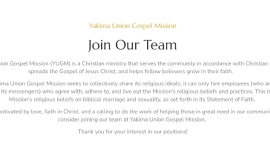
When a Christian dies in the Kathmandu Valley, the family faces the difficult task of finding a place to bury their loved one. Despite being home to Nepal's three largest cities and hundreds of smaller towns and villages, the region has no public cemetery for its Christian population, just over 100,000 people.
The only cemeteries in Kathmandu are the British cemetery, which only includes the remains of expatriates, and the Jesuit cemetery, which is no longer in use.
The Struggle to Find Burial Ground in Nepal
In contrast to Hindus, who make up 81 percent of the population, Nepali Muslims have access to two graveyards in Kathmandu that are connected to their mosques. Christians and the Kirat, who make up 3% of Nepal's population and traditionally bury their dead, have a common struggle, says Christianity Today.
Suman Dongol, who manages Koinonia Patan church in Kathmandu, explained that Christians could only cremate their dead and not bury them, adding to the difficulty of saying goodbye to their loved ones in a dignified way.
Not all can't have funerals. Local governments in Biratnagar in the east and Butwal in the south have provided graveyards for Christian communities. Witnesses to funerals in these areas have been moved by the dignified way in which the dead were laid to rest, with hundreds of people singing and carrying flowers through the jungle.
However, the lack of a burial ground in the Kathmandu Valley means many Christians cannot hold funerals for their loved ones. Over the years, Christians have tried various solutions to their burial problems, including burying their dead in a forest near the Pashupatinath Temple, a historic Hindu site. However, the government banned all burials in the forest in 1998 after designating the temple as a UNESCO heritage site and after worshipers claimed the forest as their own.
The Community is Upset Because of the Lack of Action from the Government
According to Indigenous Voice, the Kiranti people are upset with the government because they have not provided them with a specific burial ground. For many years, the Kiranti people used to bury their deceased loved ones in the Shleshmantak Jungle of the Pashupati temple in Kathmandu.
However, UNESCO discovered that concrete structures were built in the graveyard that threatened the Pashupati heritage. As a result, the PADT demolished dozens of concrete graves angered the Kiranti community.
Arjun Limbu of the Yayokha remembers that they organized a series of protest rallies against the PADT. After several days of protests, the PADT and the Kiranti representative organizations reached a compromise. The PADT allowed the community to use the Shleshmantak forest as a burial ground, but the Kiranti people agreed not to build cemented structures.
The PADT unexpectedly put a stop to the Kiranti people's tradition of burying their deceased loved ones in the Shleshmantak Jungle a few years ago, citing a lack of available space. The Kiranti community protested against the ban, but they eventually realized that the PADT's argument was valid. Indeed, no more space was left for new graves in the jungle. However, the Kiranti people still need a place to bury their dead, even if it cannot be the Shleshmantak jungle.
Also Read: Proposed Constitution Threatens Religious Freedom in Nepal
The Columbarium
"columbarium" has Latin roots and was originally called a pigeon house. Nowadays, it is a type of building used to store cinerary urns or ashes. According to UCA News, this practice dates back to the early Roman Empire era when cremation was common. In Nepal, due to practicality, cremation and columbariums have become accepted among Catholics.
Burial is not a common practice in Nepal, so Catholics typically have their loved ones' bodies cremated and their ashes stored in a columbarium after Mass. This is a longstanding tradition in all three Catholic churches in the Kathmandu Valley, as confirmed by Chirendra Satyal, a 62-year-old Catholic and director of media and communication of the Apostolic Vicariate of Nepal.
Related Article: Extremist Hindu Group in Nepal Threatens Christian Missionaries to Leave the Country


















